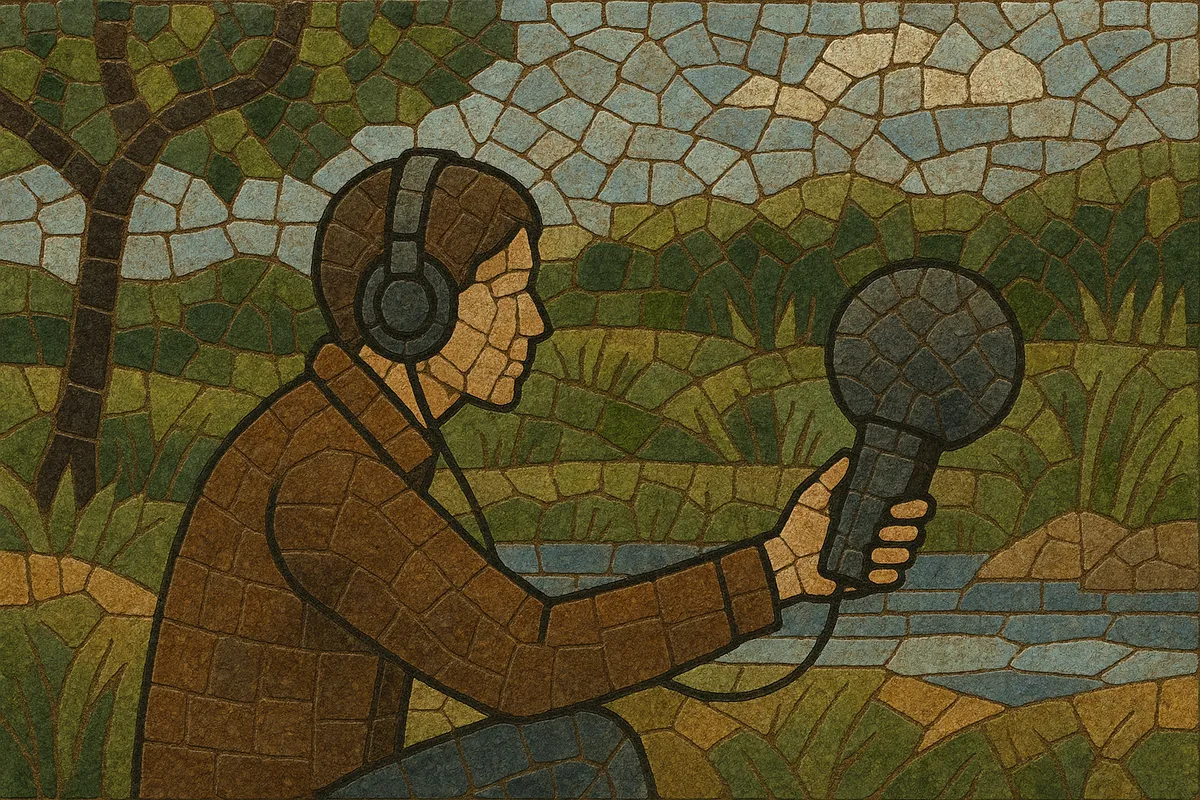
Field recording is the practice and genre of capturing sounds in situ—outside the studio—using portable recording equipment. It centers on documenting environments, human activities, wildlife, weather, machinery, rituals, and music as they actually occur, often with minimal intervention.
As a listening genre, field recording foregrounds place and presence. Releases may present unprocessed, extended takes (e.g., a shoreline at dawn), or carefully edited sequences that map a soundwalk, a village festival, or a factory floor. The results range from documentary-style fidelity to abstract, immersive soundscapes that emphasize texture, spatiality, and the ecology of sound.
Field recording emerged with the arrival of portable phonographs and wax-cylinder machines. In the 1890s and early 1900s, researchers began documenting Indigenous songs, folk traditions, and vernacular speech outside the studio. This ethnographic impulse paralleled the growth of anthropology and folklore studies, turning the phonograph into a scientific and cultural tool.
By the 1930s, institutional collectors and broadcasters were conducting systematic field trips. In the U.S., large folk-music surveys and oral-history projects preserved work songs, ballads, and regional styles. In Europe, naturalists and broadcasters pioneered wildlife and environmental captures for radio features, newsreels, and educational archives.
Lightweight reel-to-reel and later Nagra recorders expanded fidelity and mobility, enabling high-quality environmental and music documentation worldwide. Parallel developments in electroacoustic composition and the rise of acoustic ecology (soundscape studies) reframed field recordings as material for art and as a lens on the health and identity of places.
Artists and composers increasingly treated field recordings as primary musical content, not just raw documentation. Labels and festivals highlighted phonography, soundwalks, and site-specific works. Minidisc and solid-state recorders, along with affordable microphones, democratized access and encouraged global community exchange.
Today, field recording spans documentary, sound art, ambient, installation, ecology, and data-driven research (bioacoustics, urban studies). High-resolution portable rigs, hydrophones, contact microphones, and ambisonic arrays broaden the sonic palette. Ethical frameworks around consent, environmental impact, and cultural sensitivity guide many practitioners, while archival initiatives ensure long-term preservation.

